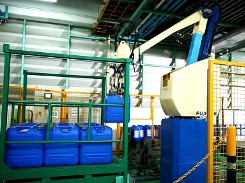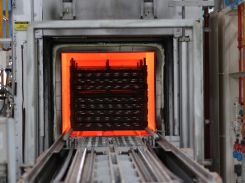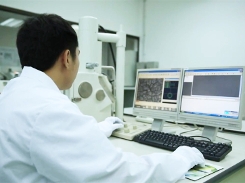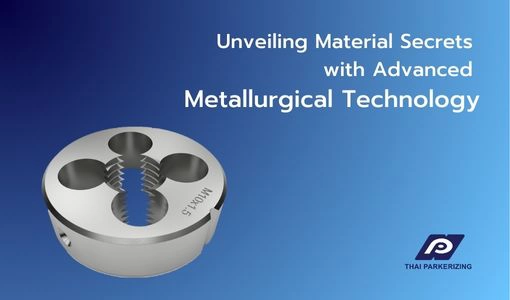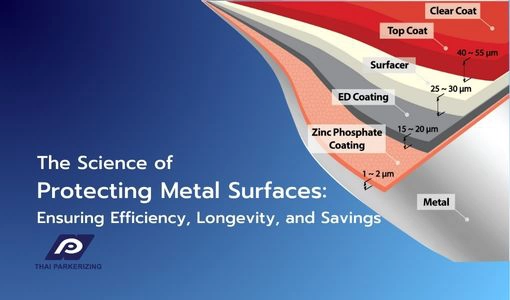- Corporate
- Chemical Products
- Chemical Controller
- Chemical for Paint Booth
- Coil Coating
- Degreasing and Cleaning chemical
- Heat&Cool exchanger (PLATECOIL)
- Hydrophilic
- Manganese Phosphate
- Nano-coating (Pallucid)
- Rolling Oil
- Rust Preventive Product
- Stearate Soap Lubricant/Dry-in-Place Lubricant (PULS)
- Trivalent Chromium/Non-Chromium
- Zinc Phosphate/Iron Phosphate
- Processing Services
- Laboratory Services
- Articles
- What's New
- Contact Us
- Privacy Policy
How PLATECOIL Heat Exchangers Work: The Science Behind Heat Exchangers That Affects Heat Transfer
25 April 2025
In the demanding environments of the petrochemical and process industries, efficient thermal management is critical. One of the most versatile and efficient technologies used for heating and cooling applications is the PLATECOIL heat exchanger.
PLATECOIL units are engineered to offer compact, durable, and highly efficient heat transfer across a wide range of fluids and processes—without the complexity of traditional shell-and-tube or finned coil systems.
This article explores how PLATECOIL heat exchangers work, what sets them apart, and the core scientific principles that govern heat transfer in industrial systems.
What Are PLATECOIL Heat Exchangers?
PLATECOIL heat exchangers are single- or multi-zone metal plates formed by resistance welding patterns into two sheets of metal, creating internal flow channels. These channels allow a heat transfer medium (such as steam, water, or thermal oil) to flow through the interior while the exterior surface exchanges heat with a product or process.
Common Use Cases
- Tank and vessel heating/cooling
- Reactor jackets
- Heating platens or panels
- Direct immersion in corrosive or viscous fluids
- Condensing or evaporating media in closed-loop systems
Core Principles of Heat Transfer in PLATECOIL Technology
Heat exchangers rely on three modes of heat transfer: conduction, convection, and (to a lesser extent) radiation. PLATECOIL systems are optimized primarily around conduction and convection, which together enable rapid and controlled thermal exchange.
Conduction Through the Plate Wall
The first layer of thermal resistance occurs across the metal plate separating the process fluid from the heat transfer medium.
Factors Affecting Conduction:
- Wall thickness
- Plate material (typically stainless steel or carbon steel)
- Thermal conductivity of the base metal
The goal is to balance durability with thermal responsiveness. Thinner walls and high-conductivity materials improve heat exchange without compromising structural integrity.
Core Scientific Principles of Heat Exchange
Heat transfer in PLATECOIL systems relies on two dominant mechanisms:
Conduction – Heat Through the Plate Wall
Conduction is the process by which heat flows through a solid medium, at Thai Parkerizing, we use SUS304 stainless steel wall to separate the fluids.
Key Factors Influencing Conduction:
- Thermal Conductivity of SUS304:
SUS304 has moderate thermal conductivity (~16 W/m·K), sufficient for steady and reliable conduction. - Plate Thickness:
Thinner walls (within safety tolerance) promote faster heat conduction by minimizing thermal resistance. - Temperature Gradient:
The greater the difference in temperature across the plate, the faster the conductive heat transfer occurs, according to Fourier’s Law.
Convection – Heat Transfer Through Fluids
Convection occurs within both the internal flow (heat transfer fluid) and external surface (process medium). It governs how heat moves between a fluid and the wall of the heat exchanger.
Convection Inside the PLATECOIL Channels
- Turbulent Flow Enhances Efficiency:
The internal flow is often designed to promote turbulence, which improves heat transfer by mixing fluid layers and reducing thermal boundary layers. - Flow Velocity and Reynolds Number:
Higher flow velocities generally increase convective coefficients. Engineers often design internal paths to fall within a Reynolds number that favors turbulent behavior.
Convection Outside the Plate (Process Side)
- Heat is absorbed or released by the process medium in contact with the external plate surface.
- Convective efficiency on this side is influenced by whether the medium is stagnant, agitated, or in forced flow.
- Film resistance and fouling can reduce performance over time, though stainless steel helps resist buildup.
Why SUS304 Stainless Steel Supports Effective Heat Transfer
SUS304, a grade of austenitic stainless steel, is widely used in heat exchanger applications due to its combination of thermal stability, corrosion resistance, and fabrication ease.
Thermophysical Properties of SUS304 Relevant to Heat Exchange
|
Property |
Value (Approx.) |
Impact on Heat Transfer |
|
Thermal Conductivity |
~16 W/m·K |
Moderate conduction efficiency |
|
Specific Heat Capacity |
~500 J/kg·K |
Affects heat absorption response |
|
Maximum Operating Temp. |
~870°C |
Withstands high thermal environments |
|
Corrosion Resistance |
Excellent in many media |
Maintains integrity and flow paths |
Stainless steel also exhibits low thermal expansion and good structural integrity, ensuring predictable performance across varying thermal cycles.
Channel Design and Flow Behavior

The internal patterns formed by welding (e.g., serpentine, swirl, or dimple paths) greatly affect fluid dynamics and, by extension, heat transfer performance.
How Flow Geometry Affects Heat Transfer
- Increased Surface Area:
Welded paths create contours and channels that enhance the total surface area in contact with fluid. - Disruption of Laminar Flow:
Flow disturbances generated by patterning promote mixing within the fluid, reducing the thermal boundary layer. - Uniform Heat Distribution:
The geometry encourages even heat exposure, reducing hotspots or temperature gradients.
Thai Parkerizing Co., Ltd. is one of Thailand’s leading providers of equipment and solutions to the chemical, petrochemical and food manufacturing industry for over four decades.
For more information about our products or services, contact us via telephone, email or the website contact form.


